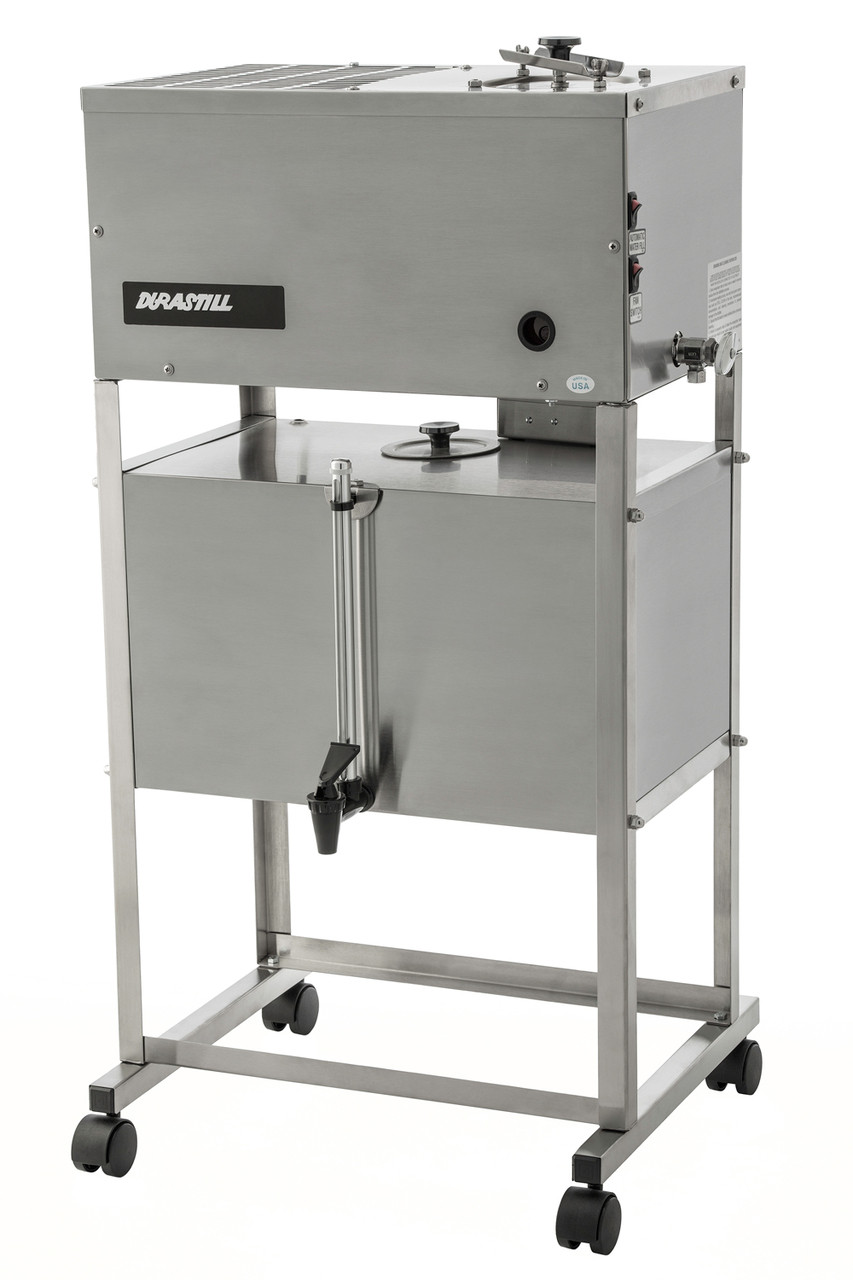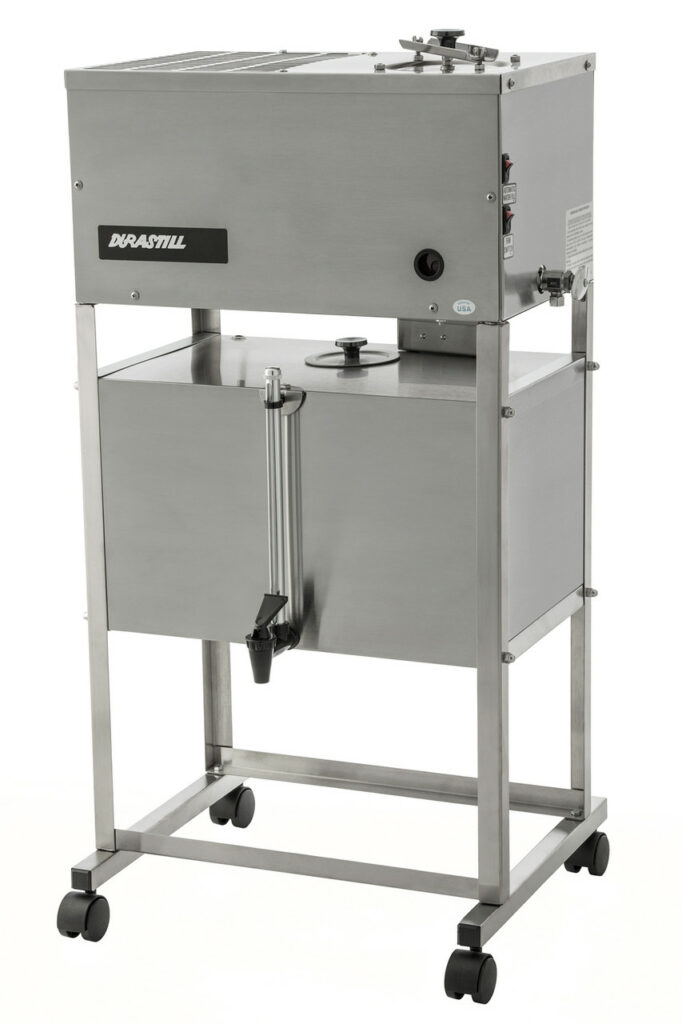The Convenience of Automatic Water Distillers
I love that my mornings now start with the push of a button: I walk in, press “go,” and by mid-day I have up to 10 gallons of pure, neutral-pH water waiting for coffee, cooking, or filling water bottles. Many units also include a carbon post-filter to polish taste and remove any lingering odors, so every sip feels crisp and fresh [5]. For anyone seeking a reliable distilled water system without the chore of constant refilling, this hands-off solution feels like a dream come true.
Back in college, my roommate once complained about our dorm’s mineral-rich tap water—hard enough to clog pipes, let alone taste good. We rigged a little pot on the hot plate and played water scientist, but between refilling, draining, and scrubbing scale, it was a chore. Now, with an automatic distiller, that whole rigmarole is gone. If you’ve ever wrestled with manual units—refilling every hour, emptying every cycle—this is a revelation. It’s as simple as “set it and forget it,” and that alone makes mornings feel a little less hectic.
Understanding the Distillation Process
At its simplest, distillation boils water until it vaporizes, leaving behind dissolved minerals, microbes, and industrial pollutants in the boiling chamber. The steam then travels through a condenser coil, cools, and drips into a storage tank as pure H₂O [1]. Unlike reverse osmosis, which forces water through a semipermeable membrane under pressure, distillation relies purely on phase change—boil, evaporate, condense—to separate contaminants.
Inside most automatic distillers you’ll find a robust stainless-steel boiling tank with an integrated heating element that drives evaporation, a tightly coiled condenser that wrings heat from the steam, and a storage reservoir that captures the purified water. Sensors keep tabs on water levels, triggering an automatic shutdown when the tank’s full. Some premium models even self-flush the chamber, expelling accumulated scale so you’re not elbow-deep in mineral sludge every month [3].
One striking detail is how steam, once cooled, yields water that tastes almost eerily like rain. Yet rainwater can contain airborne pollutants—distillation squeezes out heavy metals like lead and arsenic that home rain collectors might let slip through. A post-carbon filter then adds a final polish, snagging any volatile organic compounds or flat taste left behind [4]. It’s a neat blend of physics and user-friendly engineering, delivering lab-grade purity just steps from your kitchen sink.

Benefits of Drinking Distilled Water
When you sip distilled water, you’re giving your body the cleanest hydration possible—free from hidden minerals, heavy metals, and chemical residues. Distillation is so thorough that virtually all dissolved solids stay behind in the boiling tank [1]. For families on well water or in areas with aggressive chlorine treatment, that means no more worries about lead, arsenic, nitrates, or trihalomethanes passing through your glass.
Many users report feeling the difference within days. I noticed fewer headaches and clearer skin after a week of sticking strictly to distilled water—my energy seemed steadier and my mid-afternoon slump was less brutal [2]. A local coach told me his clients bounced back from workouts faster without the trace toxins that can contribute to inflammation. And a mom friend swapped her kids’ sugary sports drinks for distilled water plus natural flavor (a squeeze of lemon and a few berries) and said their after-school meltdowns nearly vanished.
Yes, distilled water can taste a bit “flat” at first, but that’s a testament to its purity. A simple carbon post-filter restores a lively mouthfeel without reintroducing contaminants, or you can jazz it up with fruit infusions or mineral drops if you crave a hint of flavor. Either way, you’re in control of what goes back into that perfect H₂O canvas.

Energy Usage and Cost Implications of Operating Automatic Water Distillers
Running an automatic water distiller does demand energy—typically drawing 600 to 800 watts to boil water, which converts to about 0.6–0.8 kWh per gallon produced [1]. By comparison, reverse osmosis water filtration systems often draw under 100 watts, trading heat energy for pump pressure and membrane resistance [2]. In short, distillation’s purity comes with a noticeable uptick in electricity consumption.
At an average residential rate of $0.13 per kWh, that works out to roughly $0.08–$0.10 per gallon of distilled water. If your household drinks a gallon a day, you’ll spend about $30 annually in energy costs alone [3]. By contrast, a simple carbon-filter pitcher might cost $25–$35 per year in replacement filters, with no electricity penalty. Weighing pure water against power bills is key when you’re budgeting for clean hydration.
Essential Features of Automatic Water Distillers
What makes an automatic distiller truly hands-off? The best units integrate water feed valves, float-switch level monitoring, and electronic overheat protection so you never have to hover over boiling tanks. Families and small offices can enjoy up to 12 gallons of distilled water daily without refilling or worrying about overflow [2][4].
Key components include food-grade stainless steel boiling chambers that resist corrosion, sealed condenser coils for efficient cooling, and durable storage tanks—some holding as much as 25 gallons. Electronic sensors keep everything in check, shutting off heat if water levels drop too low or tanks reach capacity. Together, these features deliver hospital-grade purity on autopilot [1][3].
Automatic drain and flush cycles help remove scale buildup without elbow grease, while built-in carbon post-filters restore a brisk taste and trap any volatile organics. It’s a comprehensive package: fill, distill, polish, and sip. For guidance on finding the perfect fit, check out our overview of the ideal distilled water system.

Maintaining Your Automatic Water Distiller: Essential Tips & Tricks
Despite being largely self-sufficient, automatic distillers still benefit from regular upkeep. Mineral scale is the biggest culprit in reduced efficiency—running a vinegar-water cycle or using a citric acid cleaner every 4–6 weeks dissolves buildup without harsh scrubbing [1]. If your model features an auto-flush drain, inspect the line monthly to ensure waste minerals aren’t causing clogs or error codes [4].
Wiping sensors, float switches, and valve housings with a damp cloth every few weeks prevents false shutoffs. Test safety cutoffs by manually filling the tank to confirm the float or electronic sensor responds correctly. If your unit includes a post-distillation carbon filter, check it monthly for discoloration and swap it out every 3–6 months to maintain taste clarity [2][3].
Finally, sanitize the storage tank and tubing twice a year by rinsing with a mild bleach solution (about one tablespoon per gallon), then flushing thoroughly with clean water. This simple ritual prevents algae or bacterial growth in hard-to-reach corners and ensures every drop remains microbiologically safe.
Comparative Reviews of Top Automatic Water Distillers
Choosing the right model can feel overwhelming, but focusing on capacity, build quality, and maintenance features helps narrow the field. Today’s top units deliver anywhere from 3 to 15 gallons per day, with larger plumb-in systems serving families or small labs and countertop versions suiting apartments or cabins [2][5].
The DuraLine Mega Classic leads with a 10-gallon stainless steel storage tank, auto-flush cleaning cycles, and overheat shutoff—backed by a 15-year limited warranty on the chamber and two years on electrical parts [4]. Its industrial-grade heating element and robust construction make it ideal for high-demand environments. For a more compact option, Fresh Water Systems’ Classic Plus pairs a 3-gallon tank with a carbon post-filter and auto-refill, ideal for kitchen counters or weekend getaways [5].
Environmental Advantages of Water Distillers
Imagine cutting your plastic bottle consumption almost to zero with a simple machine on your countertop. By ditching single-use plastic jugs in favor of reusable glass or stainless-steel containers, a home distiller can save hundreds of bottles from landfills and oceans each year. Installing a dedicated distilled water system sparks conversations in your neighborhood about sustainability and often inspires others to rethink their plastic habits.
Modern units are also built for energy efficiency. Insulated boilers retain heat, auto-shutoff sensors stop unnecessary cycles, and self-flush features maintain peak thermal performance over time [2][4]. Robust stainless steel components often outlast other kitchen appliances by years, and warranties of up to 15 years mean fewer replacements—less electronic waste heading to the dump [1][2].
Innovations in Automatic Water Distillation
Today’s automatic distillers are like self-driving cars for your kitchen sink. Advanced float switches, precision sensors, and intelligent control boards coordinate water feed, heat cycles, and auto-flush routines without you ever lifting a finger [2][4]. Some cutting-edge models even integrate smartphone apps to alert you when filters need replacement or when the storage tank is full.
The combination of stainless steel boiling chambers, high-efficiency condensers, and carbon polishing filters now delivers up to 99.9% contaminant removal, rivaling lab-grade equipment. Research labs, small clinics, and eco-conscious homes alike are embracing these hands-off solutions for unmatched hydration peace of mind [1][3].
Whether you’re driven by health, convenience, or sustainability, an automatic water distiller offers a turnkey path to ultra-pure water. No more filter changes every few months, no more plastic waste, and no more guesswork—just the simplicity of pure H₂O, day in and day out.
Citations
- [1] MicrobeNotes – Water Distiller Principle, Parts, Types, Uses & Examples
- [2] WaterFilterGuru – Best Water Distiller Reviews
- [3] Fresh Water Systems – What Is a Water Distiller and How Does It Work
- [4] DuraLine Systems – Mega Classic Automatic Water Purifier
- [5] Fresh Water Systems – Distillation Systems & Water Distillers Collection
“`html
Complete Top Picks Comparison – 20 Products
“`





















